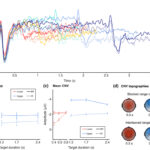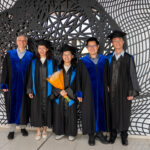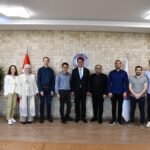It’s a pleasure to have Prof. John Wearden in Munich to give a talk on Vierordt’s Law (1868). In a compelling presentation, Professor John Wearden shed new light on the enduring enigma of Vierordt’s Law, a principle first introduced in 1868, which has fascinated and puzzled psychologists and neuroscientists alike. During his talk, John embarked on a captivating journey through the annals of research surrounding Vierordt’s Law, tracing its historical roots and the plethora of studies aimed at unraveling its complexities.
Vierordt’s Law, which deals with the human perception of time, suggests that people tend to overestimate short intervals and underestimate long ones. This paradoxical effect has been the subject of extensive study, yet it remains only partially understood. John outlined two primary schools of thought that have emerged in an attempt to explain the phenomenon: the absolute approach and the relative approach. The absolute approach posits that changes in internal clock mechanisms, such as the slowing down of a so-called “pacemaker” or issues with a “leaky accumulator,” are responsible for the distortions in time perception as shown by Vierordt’s Law. Meanwhile, the relative approach offers a different perspective, suggesting that our perception of time may be influenced by the context of previous experiences and expectations, encompassing theories like Bayesian integration framework and the effects of sequential dependence, often referred to as ‘local’ relativity.
However, as Professor John Wearden highlighted, neither approach provides a comprehensive explanation for all the observed phenomena, especially when considering the results of blocked design and repeated measurement studies, which have consistently presented challenges to existing theories. Professor John Wearden’s discussion was more than just a review of past studies; it was a stimulating exploration of where we stand in our understanding of time perception and an invitation to future researchers to explore the uncharted territories of contextual modulation of time perception.




